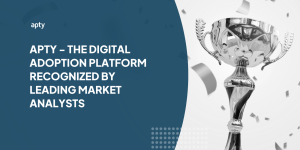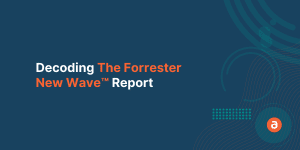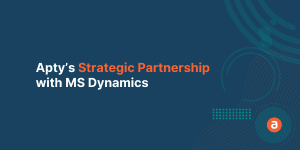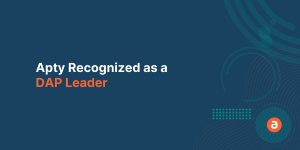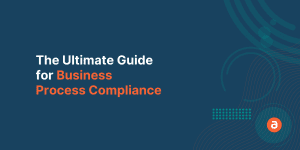Change Management in Healthcare organizations is challenging and even more so since the pandemic with the industry is changing at a rapid pace.
Enduring change is not about being indifferent, or just participating in it, it is much more than that. It is about planning the strategies, implementing the operations, and managing the complexity of the process.
The only way to survive in this environment is to accept, change, adapt, and evolve. Most of the change management efforts fail because of poor planning, implementation, lack of system compatibility, integration, and poor process design.
In this guide, we will discuss what is change management in healthcare and what method can be used to implement it within the organization. We also delve deep to understand how to manage the change efficiently within the healthcare industry.
What is change management in healthcare?
Change management in healthcare is the process of enabling people through innovation and a new way of thinking. It helps to yield new practices and improve the care delivery models.
The aim is to reduce strain on the healthcare infrastructure and professionals while providing a reliable healthcare facility to the patients.
Implementing change management in healthcare using Kotter 8-step model
To create change management strategies in healthcare organization need some kind of change management model and according to us, the Kotter-8 step model is the right fit to get started.
- Identify ‘why’ behind the change
- Communicate and engage with all the stakeholders
- Create a plan to drive change
- Collaborate with internal stakeholders to realize the plan
- Implement the change
- Measure the outcomes
- Align the strategy with the new organization vision
- Make sure that change has a long-term impact by regularly improving it
Relevant Read: Kotter-8-step-model- a guide to change management
How to Manage Change in Healthcare?
- Effectively communicating the change
- Creating an Integrated Experience
- Enabling Digital Adoption During Change
1. Effectively communicating the change
Most of the change management efforts fail because of poor communication. In an organization when there are multiple stakeholders, it is important to set the right expectations by utilizing all the necessary communication channels from the very beginning.
Whether it is the C-level executive, a mid-level Manager or a Nurse each one of them must understand the role that they will play during the change process.
But that is only possible if you get buy-in across the organization and it can be achieved when people realize the value they will create and the benefit they can reap out of such efforts.

Making people understand the importance of change can be tricky; So, it is necessary to take their opinion wherever possible because eventually, it is the employees who will ensure the success of the change initiatives.
Usually, organizations use emails as the primary channel of communication but unfortunately, the average open rate in the Healthcare sector is 21.72% and that could act as the biggest change management challenge. So the best way forward would be to use a platform that is accessed by your employees all the time while they do their job.
In this case, you can create a pop-up or notification within the application that your employee utilizes. From there you can either launch a video or a webpage to inform about the process and you can do it on a weekly basis by pushing a new video each week. This way your employees will be on the same page as you.
You can also launch a survey via these pop-ups just to understand the effect of the change on your employees. It will help you track the progress and resolve any problem during the change process. A communication channel like this is called in-app announcements which ensure that nothing is left to chance.
Here is an article on different types of Change Management Templates that can be used to ensure success.
2. Creating an Integrated Experience
In the past few years, many industries have started focusing on creating a unified experience for both employees and consumers. The Healthcare sector should also follow suit.
Consumers want to see their health status and the availability of data at their fingertips. They want access to key indicators at all times.

They can utilize the latest technologies like the Apple watch which acts as a health band. Gadgets like these help people to keep tabs on their health and analyze important health indicators.
On the other hand, healthcare employees want to access fewer applications and desire a seamless transition from one application to another. They want all the data of their patients, workforce, and inventory in a single hub which could enable them to see the overall trend and make an informed decision.
3. Enabling Digital Adoption During Change
Since the pandemic, many healthcare professionals have had to adopt the new way of doing things, manage resources efficiently, form new processes, and optimize existing ones to make the most of what they have.
Healthcare workforce had to grow rapidly to execute administrative tasks to support the doctors and other frontline workers. Applications such as medical database software, medical diagnosis software, e-prescribing software, and medical equipment management software were widely utilized to keep track of patients, maintain resources, and provide the patients with an actionable solution.

Handling a variety of applications like these could be tricky even for a veteran and it becomes even more complicated especially for a new employee.
The best solution would be to train the workforce on these applications but when you are running against time relying on traditional training means could be time-consuming and may not be an ideal solution considering the time constraints.
In such scenarios solutions like Digital Adoption Platform can help an organization to train your employees on any web-based application in a matter of a few hours.
Even if they forget or don’t know how to utilize an application they can rely on the Digital Adoption Platform as it guides the employee from one step to the other seamlessly. Further, it has cross-platform support that can guide your employee from one application to the other and eventually help them to accomplish their tasks.
Conclusion
Driving change is not an easy task, it is complex, dynamic, unexpected, and above all challenging. To cope with it you have to strategize, communicate, train, execute, and above all be prepared for the unprepared changes that will happen during the process.
Most of the change efforts fail because of poor digital adoption and it leads to low process completion or execution of tasks which eventually results in failed change initiatives.
This piece of the puzzle can be solved by using a Digital Adoption Platform like Apty which will help you to utilize any application to its fullest and empower your employees to accomplish all the tasks.

